Tumbleweeds blowing down deserted streets, boarded-up and burnt-out buildings ... these things might come to mind when you think about towns of the Old West. And while there are plenty of ghost towns to be found across the country, many of the places founded during the heyday of cattle ranching and gold mining are still alive and well, and rolling out the welcome mat to visitors looking for a little nostalgia. Here are six towns that will have you feeling like you’ve stepped straight into a classic Western.
Fairplay, Colorado
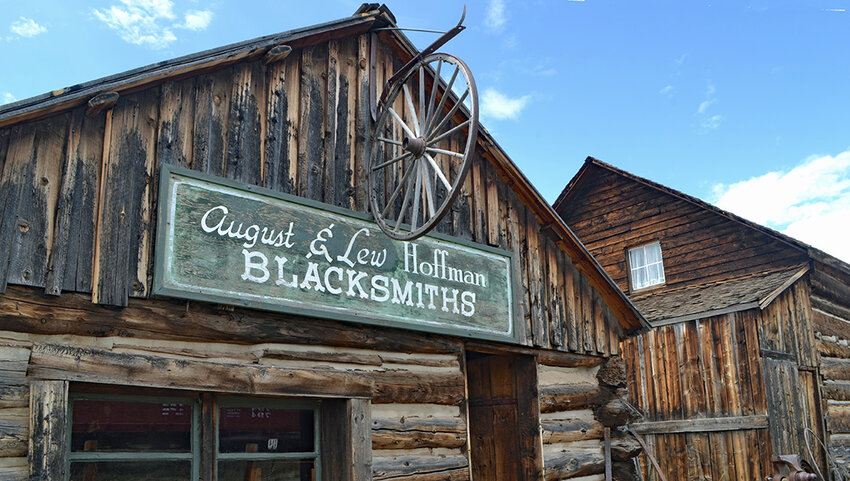
Fans of a certain animated show might know it as “South Park City,” but Fairplay is so much more than the cartoon named after it. In 1859, gold was discovered in South Park, a 900-square-mile basin surrounded by Colorado's majestic Rocky Mountains, and boom towns sprang up to serve the needs of the gold-seekers who rushed to the region. Seven of the buildings from that era are preserved on their original sites in Fairplay, along with 37 others that were relocated from ghost towns and abandoned camps, including a trapper's cabin, saloon, general store, and blacksmith shop. Together with 60,000 artifacts they comprise the South Park City Museum, where visitors can walk through historic structures and get a true feel for life in a 19th-century mining town.
Walking through history isn't the only activity you'll find here. Fairplay is located on the Middle Branch of the South Platte River, and is the Trout Fishing Capital of Colorado. You can get a permit and pan for gold, or experience world-class hiking and mountain biking, as well. After exploring, enjoy a beer and a meal at one of the atmospheric modern-day saloons, and rest your head at the historic Hand Hotel.
Deadwood, South Dakota
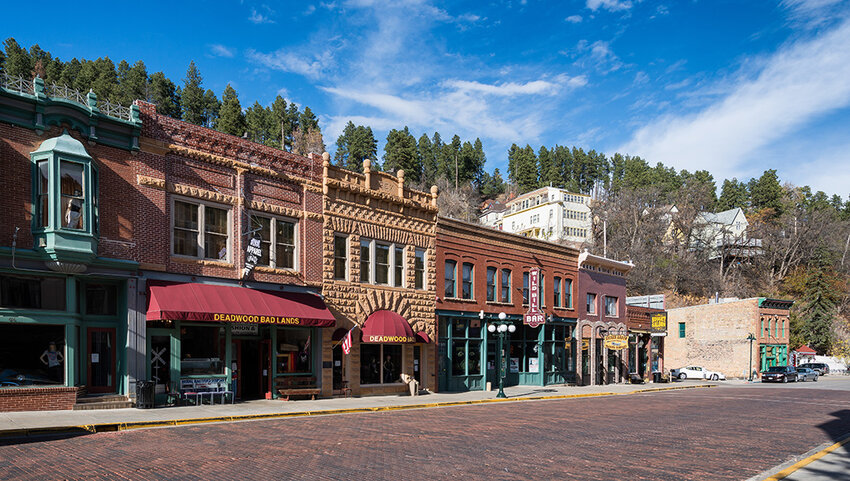
One of the Old West’s most lawless towns is still open for business. In the late 1870s, the Gold Rush-era Black Hills boom town of Deadwood boasted a high murder rate and plenty of seedy activities. But today, the activities are a bit more wholesome and historic. Deadwood is the final resting place of both sharpshooter and celebrity Calamity Jane and showman-slash-gunslinger Wild Bill Hickok. (The two are buried next to one another in Deadwood’s Mount Mariah cemetery.) Historic preservation (the entire city is now a National Historic Landmark), the legalization of gambling, and the popular HBO series have turned the city into the tourist destination. Belly up to the bar where Wild Bill played his last hand or outfit yourself like a fancy woman at Madame Peacock’s ... which sells beer in addition to bling.
Cody, Wyoming
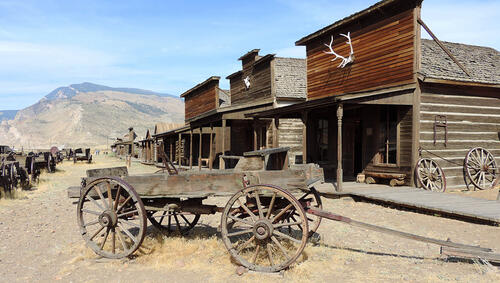
Scout, soldier, and showman William F. “Buffalo Bill” Cody was visiting Sheridan in 1894 when he encountered the gorgeous area in the Big Horn Mountains and two years later he founded the town that bears his name. Unlike notorious towns like Deadwood and Dodge City, Cody attracted visitors touring the West, especially those on their way to enjoy the natural wonders of Yellowstone. Founded in 1872, the nation’s first national park is only about an hour away.
Cody claims to be the “rodeo capital of the world,” with live rodeo every night from June 1st through August 31st. The Stampede Rodeo has been a centerpiece of the city since 1919, bringing in thousands of visitors each Fourth of July weekend. For an authentic taste of the Old West, attend a real chuckwagon dinner at the Buffalo Bill Center of the West ... and don’t miss visiting the center’s five museums before you tuck into your steak, cowboy beans and cobbler. If ghost towns are your thing, be sure to visit the Old Trail Town Museum, which has the original cabins used by Butch Cassidy and the Sundance Kid, along with other historic buildings.
Tombstone, Arizona
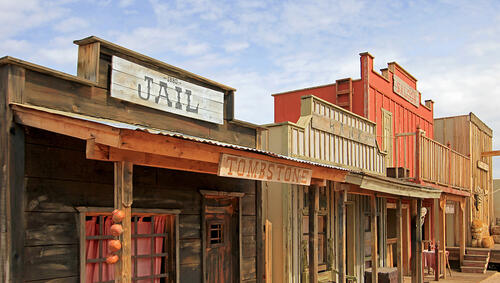
Billing itself as “The Town Too Tough To Die,” historic Tombstone makes the most of its violent past. This spot high in the Sonoran desert sprang to life as a silver mining metropolis after Ed Schieffelin discovered ore in the hills in 1877, but it achieved lasting renown as the site of the most famous gunfight in the American West. Walk the streets with the ghosts of the gunslingers who met their end at the O.K. Corral on October 26, 1881 when lawman and gambler Wyatt Earp, his brothers Virgil and Morgan, their friend “Doc” Holliday killed three members of the Clanton gang.
Despite the shootout, Tombstone was a largely prosperous and modern town whose fortunes rose and fell with the price of silver. Today it’s the tourists who bring in the gold, flocking for gunfight reenactments at the famous corral and queuing for stagecoach rides and ghost tours through Boothill Cemetery. Visitors can enjoy sweet dreams (and pie!) in an 1880s hotel, admire the world’s largest rosebush, and explore the museum of Arizona's oldest continuously published newspaper, the Tombstone Epitaph. At the end of the day, throw back a beer at Big Nose Kate’s or the Crystal Palace, two authentic Old West saloons.
Elko, Nevada
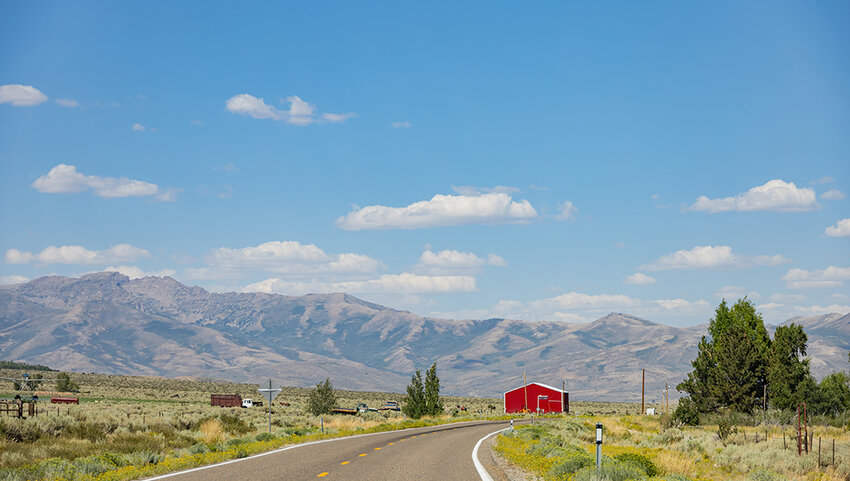
More than a quarter million pioneers hoping for a better life in the West endured months of grueling travel along the California Trail, which stretched nearly 2,000 miles from the Midwest to the Pacific Ocean. Explore the hardships and hostilities at the California Trail Interpretive Center in Elko, which lies along the route. Representatives of the Central Pacific Railroad founded the town in 1868, but the Te-Moak Tribe of Western Shoshone Indians had lived in the region for centuries. A display at the interpretive center allows visitors to explore a full Shoshone village.
With the railroad came mining and ranching, both drawing migrants from the Basque region of Spain, which straddles the border of France. Basque culture is still strong in Elko, which is home to the enormous National Basque Festival held each summer over the Fourth of July weekend. In any season, visitors can enjoy traditional Basque food at one of the local restaurants, along with outdoor recreation and scenic drives in the gorgeous Ruby Mountains.
Santa Fe, New Mexico
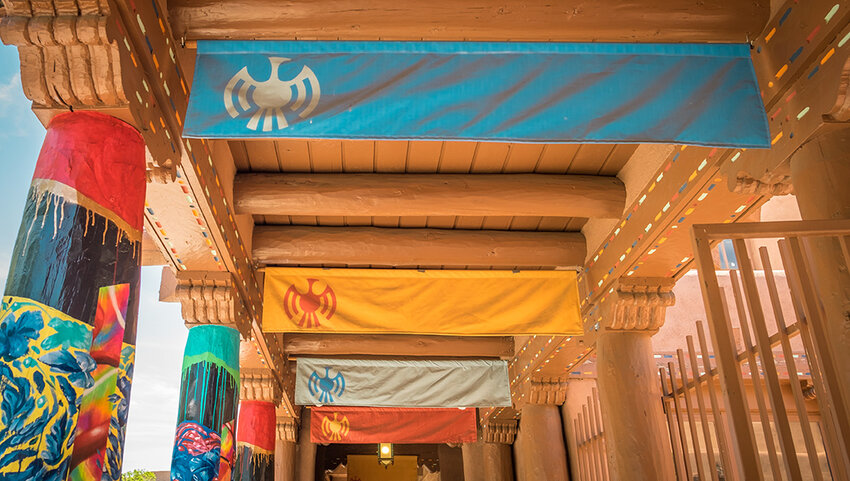
Centuries before there was an “Old West” there was Spain’s empire in the “New World.” Spain founded Santa Fe in 1610, makine it the third-oldest still-inhabited city in the modern United States. This gorgeous state capital oozes history from its Spanish colonial origins to its role as a center of wagon trail trade along the Santa Fe Trail to its continued importance first as a railroad hub.
Today Santa Fe is a prominent cultural capital in the Southwest, attracting visitors with its world-class museums such as the Georgia O’Keeffe Museum, the astonishing Museum of International Folk Art, and an array of galleries. Food is an artform here, too, and Santa Fe's award-winning culinary scene make the city a food lover's paradise. (Pro tip: When your server asks “Red or green?” answer “Christmas” to sample two kinds of delicious chiles.) The hotel offerings are outstanding as well: choose from a historic downtown adobe abode at La Fonda on the Plaza or head to the Sangre de Cristo foothills and luxuriate at the Four Seasons Rancho Encantado.





